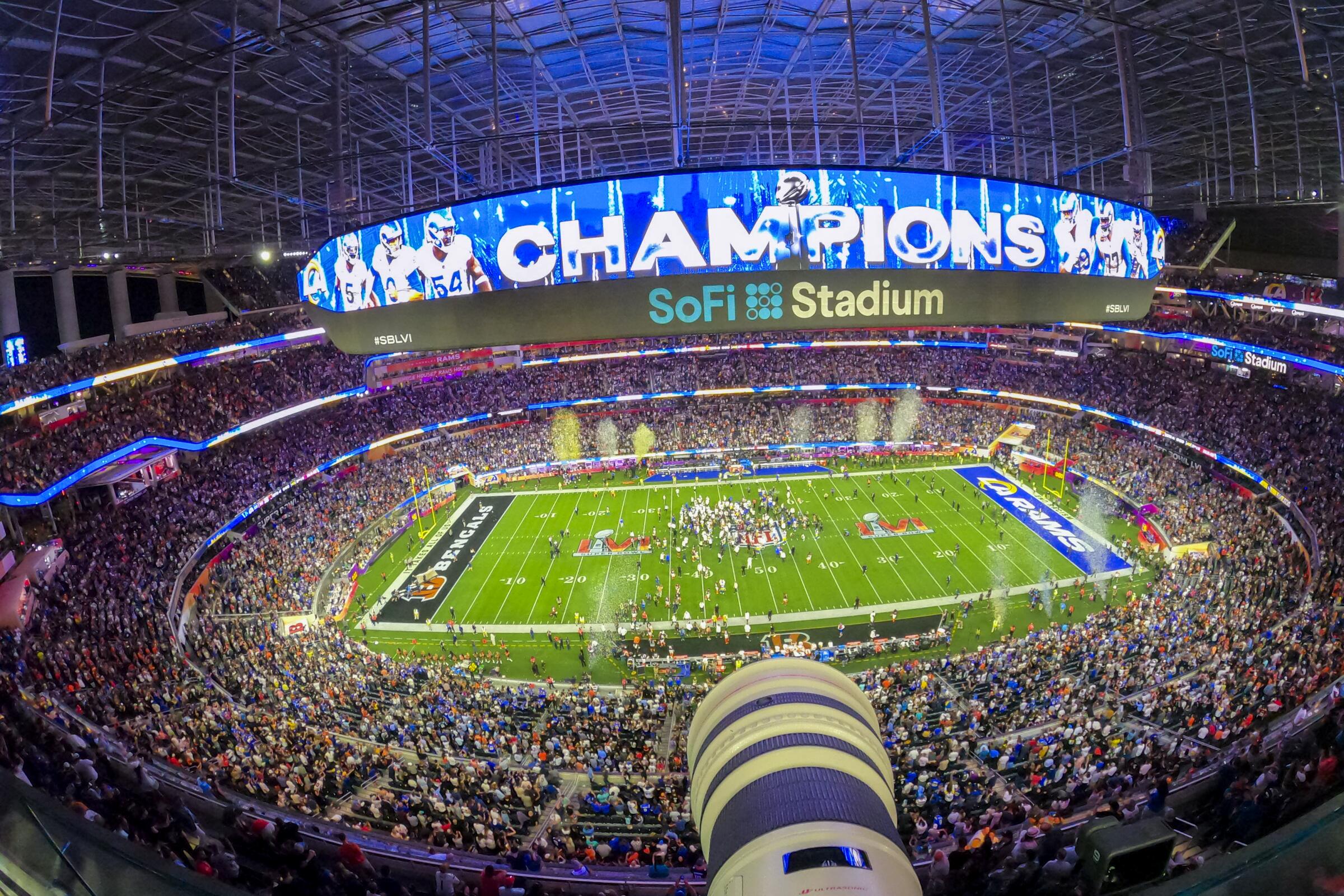The NFL Championship was the predecessor to the modern-day Super Bowl. The NFL Championship was the championship game of the National Football League before it was renamed the Super Bowl in 1967.
The NFL Championship was the pinnacle game of the NFL before the AFL-NFL merger in 1970, which led to the creation of the Super Bowl. The Super Bowl is now the annual championship game of the NFL, pitting the winners of the NFC and AFC against each other to determine the league champion.
While both games serve as the ultimate showdown in professional football, the transition from the NFL Championship to the Super Bowl marked a significant moment in American sports history.
History of the NFL Championship
The NFL Championship is a prestigious event in American football that predates the famous Super Bowl. Understanding the history of the NFL Championship is essential to appreciate its significance. Let’s take a journey back to the early years and evolution of the competition and examine its importance and significance.
Early Years and Evolution
In the early days of professional football, the NFL Championship served as the culmination of each season. It began in 1920 when the American Professional Football Association, later renamed the National Football League (NFL), was formed. When the league was still in its infancy, there was no final game to determine the champion. Instead, the team with the best win-loss record at the end of the regular season was declared the winner.
As the sport grew in popularity, the NFL sought a more exciting way to determine the champion. In 1933, the league introduced a playoff system, creating a playoff game between the winners of two divisions—one in the East and one in the West. The winner of this game was crowned the NFL Champion. This format continued until the early 1960s when the NFL reorganized its divisions and conferences.
The playoff system changed in the 1960s as the NFL expanded with new teams. The league introduced the concept of a championship game, known as the NFL Championship Game, where the winners of the two conferences would face off to determine the league champion. This was a momentous occasion in the history of the NFL Championship, as it marked the evolution towards the modern-day Super Bowl.
Importance and Significance
The NFL Championship holds significant importance in the sport’s history. It served as the benchmark for excellence in professional football before the advent of the Super Bowl. Winning an NFL Championship was the ultimate achievement for players, coaches, and teams, symbolizing their dominance and success in a highly competitive league.
Moreover, the NFL Championship was a crucial event for fans, offering a thrilling culmination of the season and an opportunity to witness the best teams battle it on the field. It generated enormous excitement nationwide and became a cultural phenomenon ingrained in American sports tradition.
The Super Bowl emerged in the late 1960s and eventually surpassed the NFL Championship in popularity and significance. Yet, the NFL Championship laid the foundation for the modern-day Super Bowl, serving as its predecessor and establishing a rich history of football excellence.
History of the Super Bowl
The Super Bowl is the ultimate championship game of the National Football League (NFL), considered the pinnacle of American sports. But how did this iconic event come to be? Let’s delve into the history of the Super Bowl and explore its evolution over the years.
Creation and Early Super Bowls
The idea of a championship game between the NFL and the American Football League (AFL) was first proposed in the 1960s to determine the true champion of American football. In 1967, the first AFL-NFL World Championship Game, later known as Super Bowl I, was held. This groundbreaking game featured the Green Bay Packers, champions of the NFL, and the Kansas City Chiefs, champions of the AFL.
The inaugural Super Bowl occurred on January 15, 1967, at the Los Angeles Memorial Coliseum. The Packers emerged victorious with a 35-10 win over the Chiefs, solidifying their place in history as the first Super Bowl champions. The game, however, did not initially carry the “Super Bowl” name. It was not until Super Bowl III in 1969 that the name “Super Bowl” was officially adopted.
Growth and Popularity
From its humble beginnings, the Super Bowl has grown into a global spectacle, attracting millions of viewers worldwide. The game’s popularity skyrocketed in the 1980s and 1990s thanks to high-stakes matchups and unforgettable performances. Notable games, such as Super Bowl XXV, featuring the New York Giants and the Buffalo Bills, and Super Bowl XXXIV, famously known for the last-second tackle that secured the St. Louis Rams’ victory over the Tennessee Titans, captivated audiences and established the Super Bowl as a must-watch event.
As the Super Bowl gained traction, it also became a cultural phenomenon. Halftime shows, initially featuring marching bands, gradually evolved into extravagant performances by some of the world’s biggest music artists. Furthermore, commercials aired during the Super Bowl became highly coveted advertising spots, with companies vying to create unique and memorable commercials that would resonate with viewers.
The Super Bowl’s popularity has also expanded beyond its American roots. The game is now viewed as an unofficial holiday, with worldwide parties, celebrations, and friendly rivalries occurring. Its influence extends beyond sports, making the Super Bowl a true cultural event that brings people together.
Format and Structure of the NFL Championship
Regular Season and Playoff Structure
The NFL regular season consists of 32 teams divided into the National Football Conference (NFC) and the American Football Conference (AFC). Each conference is further divided into four divisions, with four teams in each division. The regular season typically spans 17 weeks, during which each team plays 16 games, with one bye week. Based on their regular-season record, the top six teams from each conference advance to the playoffs, culminating in the ultimate showdown of the Super Bowl.
Teams and Conferences
As of 2022, the NFL consists of 32 teams, with 16 in the NFC and 16 in the AFC. The teams in each conference compete against one another throughout the regular season to secure a place in the playoffs. The winner of each conference then faces off in the Super Bowl to determine the NFL champion for that season. Each team represents a specific city or region with a rich history and dedicated fan base, making the NFL Championship a celebrated event.
Format and Structure of the Super Bowl
The Super Bowl is the pinnacle of American football and is one of the most anticipated sporting events globally. Its format and structure set it apart from other NFL championships and make it a distinctive spectacle. Understanding the nuances of the Super Bowl, including its qualification process, halftime show, and commercials, sheds light on why this event is so significant in the world of sports.
Qualification and Selection Process
The qualification process for the Super Bowl is rigorous and revolves around the teams’ performance throughout the regular season and playoffs. The AFC and NFC champions earn the coveted spots in the Super Bowl by emerging victorious in their respective conference championship games. This selection process ensures that only the most deserving and competitive teams compete for the title, elevating the event’s excitement and anticipation.
Halftime Show and Commercials
The halftime show and commercials during the Super Bowl are integral parts of the event, attracting viewers beyond dedicated football fans. Top musical performers and entertainers take center stage during the halftime show, delivering electrifying performances that captivate millions of viewers. Additionally, the commercials showcased during the game are a spectacle in their own right, with brands vying for the attention of a massive and engaged audience, often producing some of the most memorable and talked-about advertisements of the year.
Comparison Between the NFL Championship and the Super Bowl
The NFL Championship and the Super Bowl are two prestigious events that hold significant importance in American football. While they both crown the champions of the National Football League (NFL), several key differences set them apart.
History and Tradition
The NFL Championship, also known as the league title game, dates back to the early days of professional football. It originated in 1920 when the American Professional Football Association (APFA) was established. Over the years, the league evolved and eventually became the NFL we know today. The NFL Championship was held annually until the birth of the Super Bowl in 1967.
The Super Bowl, on the other hand, is a relatively newer addition to the football landscape. It was conceived as a championship game to determine the best team from the NFL and the rival American Football League (AFL). The inaugural Super Bowl occurred in 1967, making it a grand spectacle that brought together the best of both leagues. This merger of the NFL and AFL led to the formation of the modern-day NFL as we know it now.
Audience and Viewership
When it comes to audience and viewership, the Super Bowl reigns supreme. It is widely regarded as the biggest sporting event in the United States, with millions of fans eagerly tuning in year after year. This game transcends the boundaries of football, attracting a diverse audience that includes sports enthusiasts, casual viewers, and even non-football fans. The Super Bowl has become a cultural phenomenon, capturing the nation’s attention and beyond.
On the other hand, while prestigious in its own right, the NFL Championship does not generate the same level of national and international interest as the Super Bowl. The NFL Championship focuses primarily on the die-hard football fans who follow the league closely. Although the championship game draws significant viewership, it remains a more niche event than the Super Bowl.
Moreover, the Super Bowl also holds a tradition of being a major marketing and advertising platform. It is a prime opportunity for brands to showcase their products and services to a massive audience. Advertisements during the Super Bowl are highly sought after, and companies invest millions to secure coveted spots.
Overall, while the NFL Championship and the Super Bowl represent the pinnacle of excellence in American football, their history, tradition, and audience reach differ. The NFL Championship has a long-standing legacy as the precursor to the Super Bowl. At the same time, the Super Bowl has soared to unparalleled heights, captivating millions with its grandeur and spectacle.
Conclusion
The NFL Championship and the Super Bowl may seem similar, but they have distinct differences. While the NFL Championship has a longer history and was established first, the Super Bowl has gained immense popularity and evolved into a cultural phenomenon.
Both events showcase the best of American football, captivating fans worldwide. So whether you prefer the tradition of the NFL Championship or the grandeur of the Super Bowl, both offer thrilling experiences for football enthusiasts.

